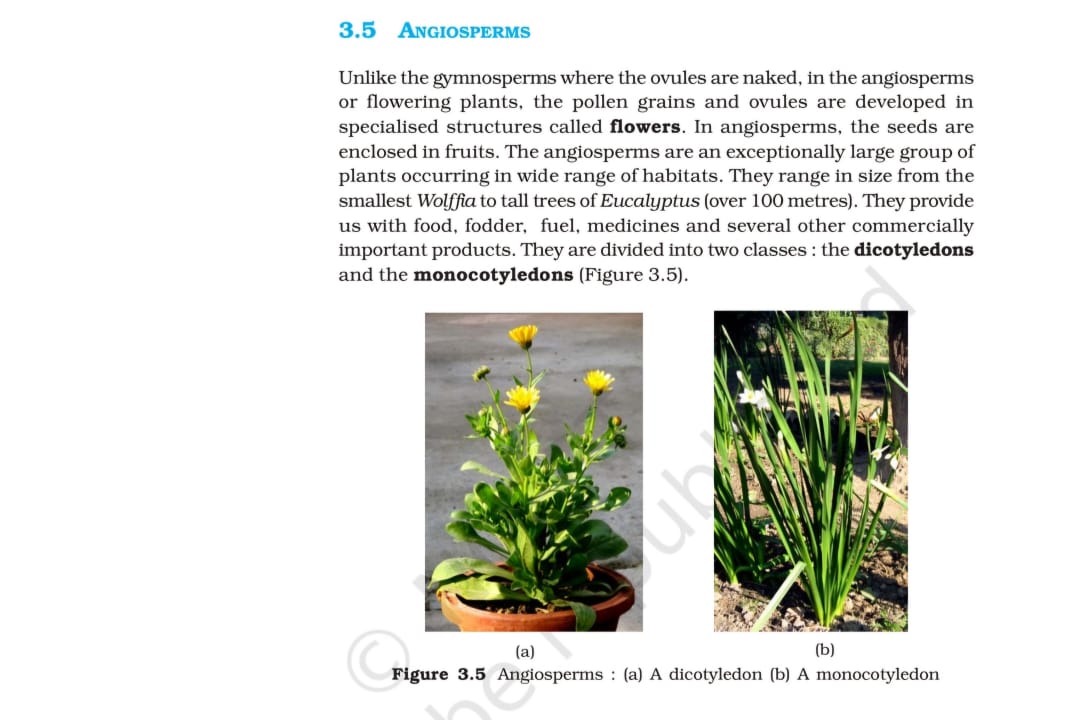What are the key differences between dicotyledons and monocotyledons in angiosperms?

Understand the Problem
The question discusses the characteristics and classification of angiosperms, specifically focusing on the differences between dicotyledons and monocotyledons. It highlights their structures, habitats, and the ecological importance they fulfill.
Answer
Monocotyledons: one cotyledon, fibrous roots, scattered vascular bundles, parallel leaf venation, flower parts in threes. Dicotyledons: two cotyledons, taproot, vascular bundles in ring, netted venation, flower parts in fours or fives.
The key differences are that monocotyledons have a single cotyledon, fibrous roots, scattered vascular bundles, parallel leaf venation, and flower parts in multiples of three. Dicotyledons have two cotyledons, taproot systems, vascular bundles in a ring, netted leaf venation, and flower parts in multiples of four or five.
Answer for screen readers
The key differences are that monocotyledons have a single cotyledon, fibrous roots, scattered vascular bundles, parallel leaf venation, and flower parts in multiples of three. Dicotyledons have two cotyledons, taproot systems, vascular bundles in a ring, netted leaf venation, and flower parts in multiples of four or five.
More Information
Monocotyledons and dicotyledons represent the two major groups of angiosperms, distinguished by the number of seed leaves (cotyledons) they have. This fundamental difference leads to several physiological and structural variations between the two groups.
Tips
A common mistake is confusing the leaf venation patterns and the number of flower parts in monocots and dicots. Remember monocots have parallel veins and flower parts in threes while dicots have netted veins and flower parts in fours or fives.
Sources
- Difference Between Monocotyledons and Dicotyledons - BYJU'S - byjus.com
- Difference Between Monocotyledons and Dicotyledons - Toppr - toppr.com
- Difference Between Monocotyledon and Dicotyledon - GeeksforGeeks - geeksforgeeks.org
AI-generated content may contain errors. Please verify critical information